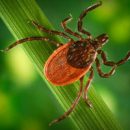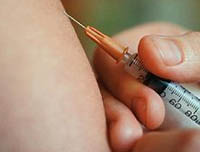Ways to transfer an ebola virus, as can be infected with hemorrhagic ebol fever.
Content

Hemorrhagic ebol fever is a viral
Disease with severe flow and high mortality. For the first time, she was revealed in two
African countries: Zaire and Sudan, in 1976. Then she was recognized dangerous
infection due to the extremely large frequency of death. Depending on the
Type of virus mortality reached 88%. The main method of combating steel disease
Measures to prevent infection. To achieve successful results,
you need to know how ebola infection is transmitted.
The main center of Ebola virus is in nature.
Supplementary by his pavements are monkeys and bats.
The main source of infection is a sick person.
Several less often infection can occur when contact with monkeys. Because of
that the virus penetrates almost all organs, the paths of its transfer is quite
A varied:
-
In the contact path, the virus penetrates through
microcracks in the skin and mucous membranes; -
With a airfield path, infection is possible
When inhaling the smallest particles of saliva or sputtering or coughing
patient; -
In the parenteral path, infection occurs
Due to the injected material infected with the virus directly into the blood
(for example, when using poorly sterilized tools that
treated with a patient); -
Scientists do not exclude sex transfer
(virus more than three months after recovery is released with sperm), as well as
Intestinal and oral.
Variety of ebola virus distribution paths
High mortality from it and the lack of effective treatment methods makes
This disease is one of the most dangerous on earth.









